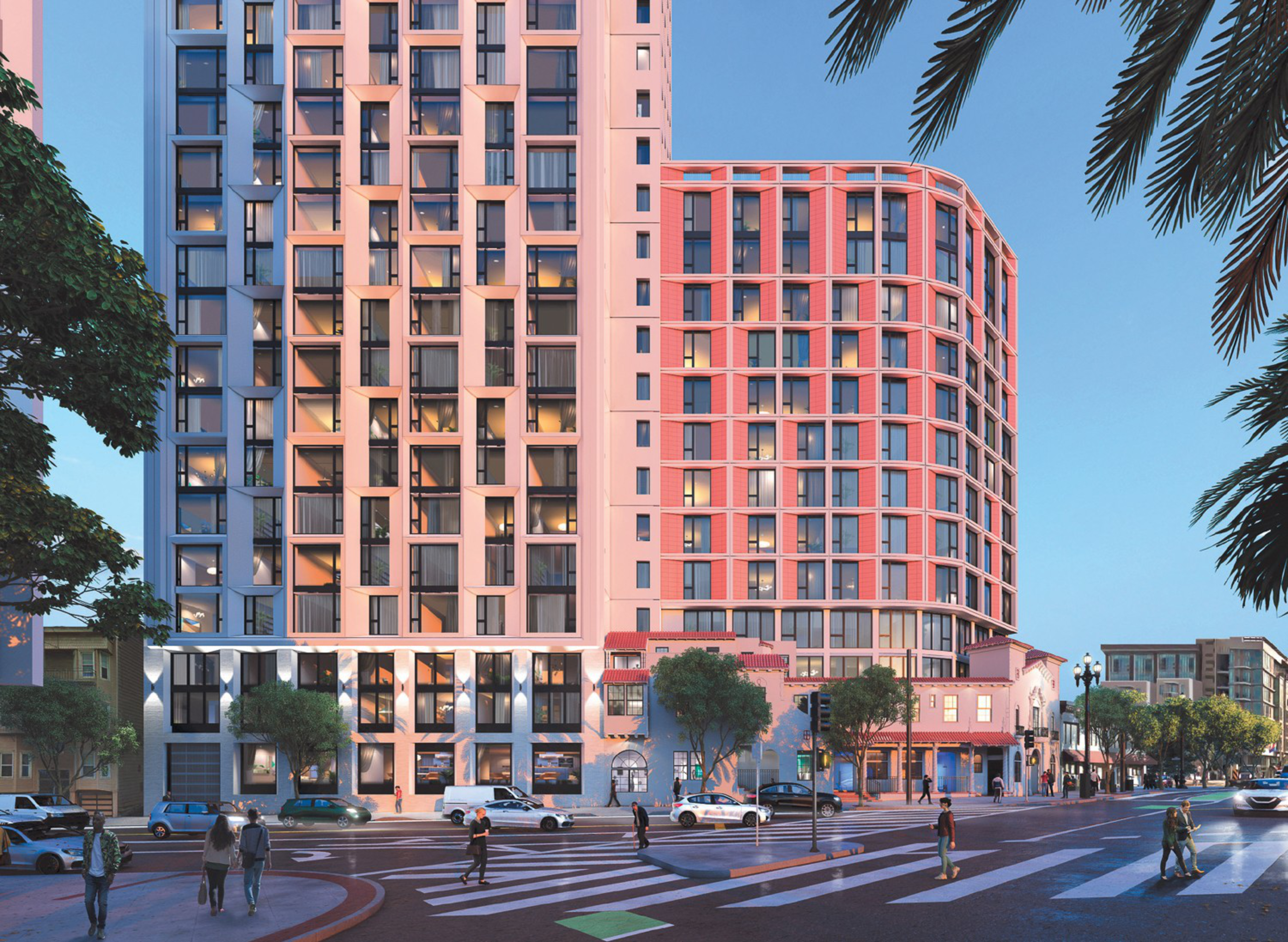San Francisco could soon see 200 new homes in Duboce Triangle enabled by a controversial state law aimed at spurring faster housing development across California.
Developer representatives filed a notice of intent (opens in new tab) with the city to build a 23-story apartment building at 1965 Market St. that takes advantage of Senate Bill 423, a state law that kicked in at the end of June to fast-track new housing. The apartment tower—slated to include 200 residential units—could be the city’s inaugural project to take advantage of SB 423 benefits like bypassing discretionary hearings and waiving environmental reviews.
“We need more housing and we’re thrilled that this legislation is accelerating its production,” said Anne Yalon, a spokesperson for the Planning Department. “SF Planning and the state are committed to continually finding ways to cut red tape and streamline the process.”
San Francisco was the first city subjected to SB 423’s new rules because it failed to meet its housing goals and holds the dubious distinction of having the longest housing approval timelines in the state.
The plans for 1965 Market St. would combine four existing lots to build the 200 apartment units, which range from studios to three-bedrooms, and 28 of which will be dedicated for residents making 50% or less of the local median income. The complex (opens in new tab) will also include a 61-space underground parking garage (with additional spots for 135 bikes) and integrate an existing two-story historic commercial building that once housed a funeral home (opens in new tab). (The San Francisco Business Times first spotted the filing (opens in new tab).)

“We have density in the right location, with lots of transit in the heart of a neighborhood,” said Chris Foley, consultant for the property owner. The project also includes ample outdoor space and room for amenities in “a nice looking building,” he added (SF-based RG Architecture designed the project).
The notice of intent filing precedes the submission of official plans for the tower, which Foley said are forthcoming.
In addition to the Duboce apartment tower, the planning department has received notices about two other smaller projects that aim to use SB 423, according to Yalon, one near City College and another near Bernal Heights.
“While it’s going to benefit these big projects, it’s also going to streamline smaller ones,” said Corey Smith, executive director at the nonprofit Housing Action Coalition, of the 1965 Market St. plans. “It will make it easier to build four-plexes on the west side of San Francisco, for example.”
Development spurred by SF’s housing failure
The Duboce project could be the first in a groundswell of development that speeds forward in the wake of SB 423, which was authored by state Sen. Scott Wiener.
The law took effect after San Francisco failed to make sufficient progress towards its state-mandated housing goals, which stipulate that it must build 82,000 new units of housing by 2031. To reach that benchmark, the city needs to allow for 10,000 homes a year. The current number this year is fewer than 900.
With SB 423’s implementation, the city’s glacial housing permitting process could be slashed from a two-year average to as little as six months.
“No discretionary hearings, no CEQA lawsuits, none of the politics at the Board of Supervisors, you just get your damn permit,” Sen. Wiener said at a press conference announcing the change.
The potential impact on San Francisco’s housing market will be massive, observers agree (opens in new tab), and the Market Street project, in particular, could kick things off with a bang.
“We have to build more housing on transit rich corridors, which will reduce rents, which will reduce homelessness, which will reduce drug addiction,” Foley said.

While the law is something of a dream come true for YIMBY housing advocates, critics contend (opens in new tab) it doesn’t allow for enough community input and could stifle affordable housing (10% of units in new developments must be deemed affordable to qualify for SB 423 unless there are local affordability mandates like in San Francisco).
Mayoral candidate Aaron Peskin, for example, said SB 423 will promote gentrification and “be a boon for speculators and developers who will build expensive units out of reach for most San Franciscans.”
The legislation also doesn’t address other barriers to new development, including expensive materials costs and labor. “The real problem right now is that there’s a housing crisis and 423 is just one tool,” Foley said. “You’re going to have to see interest rates go down, construction costs go down, and some sort of property tax abatement to really get stuff built.”
Still, city officials say they expect more project plans soon.
“With improving economic conditions, we anticipate more sponsors will take advantage of SB 423,” said Yalon.
The Housing Action Coalition’s Smith also predicts that plans will increase as more developers become aware of the new rules.
“Now they’re trying to see where their opportunities are, trying to run the math and see if they can have something work,” Smith said. “I think that as we get to the fall, we’ll start seeing an uptick, and then if the economy continues to pick up next year, I think we’ll see even more projects come through.”
Correction: The article was updated to clarify the affordability mandates in SB 423.

